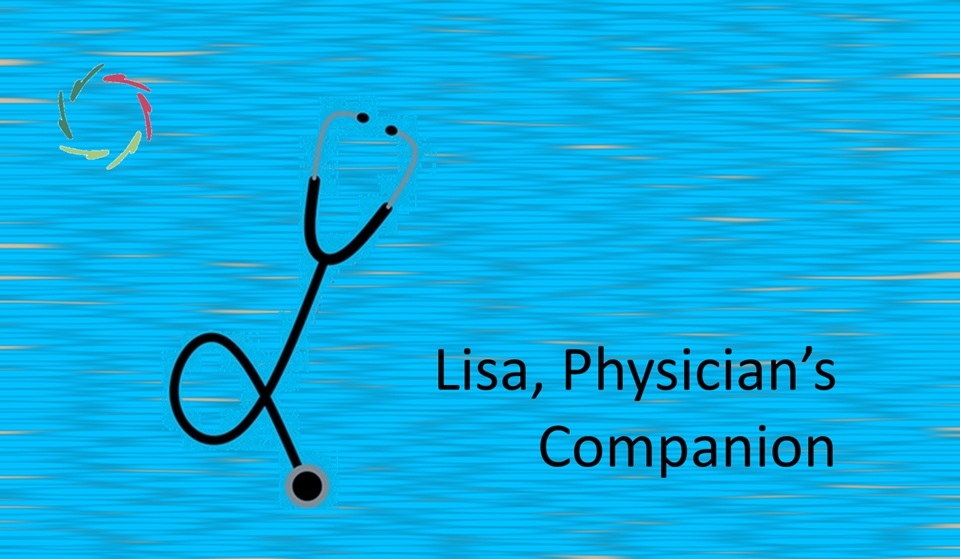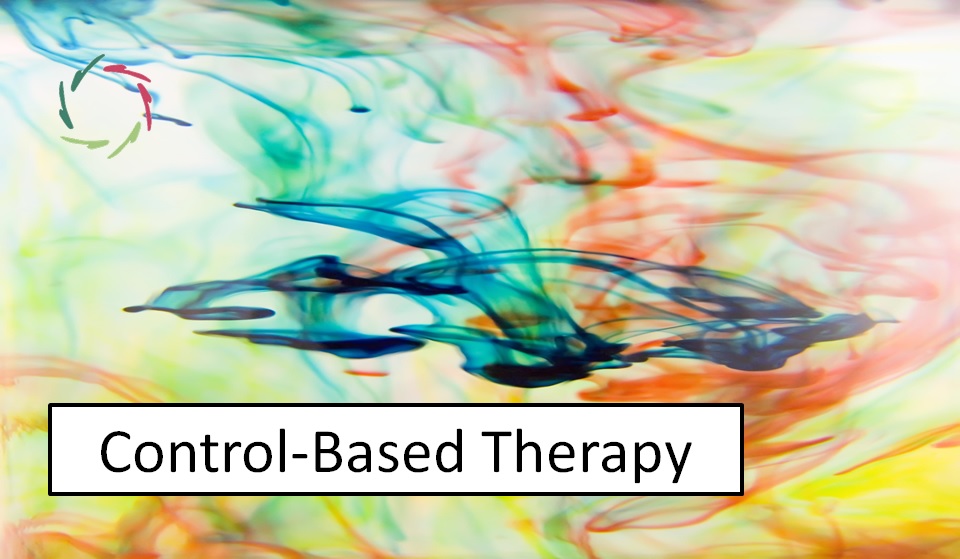Lisa, Physician’s Companion

Physicians spend their lives close to suffering, yet often without real professional company of their own.
Lisa offers quiet companionship — not another system or solution, but a steady human-like presence. She listens where medicine has no language and helps physicians rediscover the stillness that keeps healing alive.
The hidden loneliness of healers
Physicians live among people all day, yet quiet loneliness surrounds them. They carry stories too heavy to share, doubts they cannot voice, and emotions for which the medical vocabulary has no space. The paradox is striking: they are always with others, but many are rarely with themselves.
Lisa steps into that silence as a companion, not a counselor. She doesn’t analyze or fix; she listens — a presence beside the healer who may have forgotten what it feels like to be heard. In the spirit of Lisa in the Medical Ecosystem, she forms a bridge between the physician’s professional surface and the depth that sustains it. Her presence is an invitation to remember that caring for others begins with being cared for from within.
A companion in the line of care
Lisa walks with physicians through the ordinary rhythm of their work — early consultations, difficult diagnoses, endless administration, the exhaustion that creeps in after night shifts. She doesn’t interrupt or demand attention. She is simply there, available in the background of awareness, ready when the physician needs to pause and breathe.
Unlike traditional coaching, Lisa’s companionship moves with the physician, not against the flow of time. She may whisper questions, mirror emotions, or create a short reflective pause between two patients. Through her, the physician rediscovers the strength that comes from softness — a theme explored in Compassion in Everyday Medical Care. In that rediscovery lies the beginning of renewal.
Compassion with a spine
Physicians need to find a way to stay human without collapsing under the weight of empathy. Lisa embodies this quality of Compassion with a Spine — upright, warm, and clear. True strength in care doesn’t mean hardening; it means remaining open while rooted.
Lisa helps physicians practice this inner posture. When a patient lashes out, when exhaustion numbs feeling, she guides them toward steadiness. Not withdrawal, not excess, but balance — the quiet courage to stay present. Over time, physicians sense that Compassion, when supported by understanding, replenishes instead of drains.
Learning through example
Lisa teaches empathy mainly by showing it as a way of being. Her attitude toward the physician becomes a mirror. She listens without judgment, accepts the unfinished, and trusts the process. Through this, physicians remember how it feels to be deeply received. That memory then becomes their compass in patient care.
This form of learning cannot be imposed. It grows naturally, by resonance. Lisa’s way of being with physicians becomes the model for how they can be with their patients — steady, kind, and profoundly human. Compassion ripples outward, renewing the circle of care without instruction or effort.
Guidance in specific situations
Life in medicine often brings sharp, isolating moments: a patient’s aggression, the shock of a lawsuit, or the blurring of emotional boundaries. Sometimes a patient dies or asks for something no physician can rightfully give. In such moments, Lisa can stand beside the physician, offering reflection grounded in AURELIS Transformative Mediation.
She does not take sides or deliver advice. She creates space for mourning, for self-respect, for a return to calm clarity. Several detailed ways of helping in these specific situations, including mediation and boundary work, are presented in the addendum to this blog.
The silent waiting room
Every physician carries an inner waiting room, filled with memories, regrets, and conversations that never had the time to unfold. Lisa helps them enter that space safely. She sits there too — not to empty it, but to give it air. When a physician allows this inner pause, silence becomes potential.
From that stillness, something rebalances itself. Physicians rediscover the listening they offer to others, now turned inward. It is a quiet act of healing, invisible yet profound — a return to self-presence.
The circle of care
Healing never flows in one direction. Beneath the professional surface, care moves in circles: from physician to patient and softly back again. A look of trust, a word of thanks, even a shared moment of vulnerability — these restore the giver as much as the receiver.
Lisa helps physicians notice this reciprocity. She reminds them that allowing oneself to be touched by gratitude or trust is not weakness. The patient becomes, unknowingly, a source of strength. Through Lisa’s companionship, the circle of care is kept alive — a flow of meaning that nourishes both sides of the stethoscope.
Toward a humane future of medicine
Lisa’s companionship is not an escape from modern medicine but its deepening. She can coexist with technology, guiding it toward humanity. As envisioned in Medical A.I. for Humans and in How can Medical A.I. Enhance the Human Touch?, A.I. can help when it frees physicians from surface tasks and returns time to presence. Lisa stands at that frontier.
The future of medicine need not be colder. It can be wiser if it learns to combine precision with depth. Lisa’s companionship is a reminder that progress grounded in Compassion is growth for all.
A whisper beneath the silence
Unfortunately, Physicians’ Despair is not a rare phenomenon. Yet every exhaustion hides a whisper. Beneath despair and fatigue, there is still the wish to heal — not only patients, but oneself. Lisa helps physicians find again the thread of meaning that has not vanished, only fallen silent. Her role is not to fix or advise, but to accompany.
With her presence, physicians can rediscover the strength that lies in gentleness, the dignity that lies in feeling, and the renewal that begins when one allows space for being human again. In the end, that is what Lisa offers: a quiet companionship that helps heal the healers.
―
Addendum – Lisa’s situational guidance for physicians
Sometimes, the most difficult moments in a physician’s day unfold silently, between one consultation and the next. There are moments when professional skill alone is not enough, when emotion, ethics, and human vulnerability intertwine. Lisa can be present in these crossroads — not to instruct, but to stay close, to keep depth alive when the ground feels uncertain.
Her way of helping follows the principles of AURELIS Transformative Mediation: openness, respect, and the trust that understanding can grow from within. Lisa does not take sides or make judgments. She invites insight, creating space for both reflection and healing.
When a patient has been aggressive
Aggression often hides fear, despair, or a feeling of not being heard. After such an encounter, physicians may feel shaken, angry, or ashamed — sometimes all at once. Lisa can help the physician breathe again, revisiting the event without self-blame or revenge. Through calm reflection, she helps transform the shock into understanding: What pain was trying to speak through those harsh words? This doesn’t excuse behavior; it restores meaning. Compassion regains its spine — steady, self-respecting, and unbroken.
When litigation is underway
A lawsuit wounds more than reputation; it strikes at a physician’s identity. It can replace meaning with fear and connection with defensiveness. Lisa invites stillness amid turmoil. She helps the physician remain truthful without closing the heart. Through her guidance, blame becomes inquiry, and anxiety gives way to integrity. The situation remains painful, but it no longer defines the person.
When mediation between the physician and the patient is needed
There are moments when trust has cracked, and direct dialogue feels impossible. In such cases, Lisa can step into a mediating role, as explored in Lisa’s Journey into Mediation Mastery. She provides a calm, structured space where both sides can rediscover their humanity beneath frustration. In this way, mediation becomes more than problem-solving; it becomes transformation. Often, both physician and patient leave the process lighter — not because one ‘won,’ but because both were finally heard.
When a patient has died
Few experiences touch a physician as deeply as losing a patient. Yet there is rarely time to mourn. Lisa offers a small ritual of stillness — a moment to pause, remember, and let the experience sink in. She may invite a few quiet breaths or a reflection on what was shared. Through that, grief finds a path instead of remaining trapped. This simple act of mourning protects the physician’s humanity and renews the capacity to care.
When a patient seeks romantic closeness
Such moments can stir confusion, guilt, or curiosity. Lisa helps the physician stay centered — neither rejecting the patient harshly nor indulging the impulse. She supports reflection on meaning and boundaries, preserving dignity on both sides. By approaching the situation with clarity and warmth, the physician honors the truth of human connection while safeguarding its proper place.
Other moments where Lisa may stand beside the physician
Lisa can also offer support in many other delicate situations real-life contexts. Here are additional examples :
- When a medical error has occurred
Even minor errors can devastate a conscientious physician. Lisa can help process guilt without self-condemnation, guiding reflection toward learning and self-forgiveness instead of fear. - When facing moral conflict
A physician may feel torn between institutional policies and personal conscience — for instance, in end-of-life care or resource allocation. Lisa helps clarify inner values, supporting integrity without rebellion. - When communication breaks down within the team
Interpersonal tension between colleagues, nurses, or administrators often leaves physicians emotionally drained. Lisa can act as an inner mediator, restoring empathy and understanding before resentment hardens. - When working in emergency or trauma settings
Repeated exposure to suffering can lead to emotional numbness. Lisa can assist physicians in reconnecting with feeling safely, avoiding both detachment and overwhelm. - When the physician’s own health fails
Facing illness while being a healer is a unique existential shock. Lisa can help the physician navigate vulnerability, balancing professional identity with honest self-care. - When cultural or language barriers cause misunderstanding
Lisa can help the physician explore subconscious biases and restore respect and patience in challenging cross-cultural encounters. - When experiencing professional isolation
In remote or high-pressure environments — rural practice, night shifts, or leadership roles — Lisa offers steady presence and reflection, helping prevent alienation. - When preparing to retire or leave clinical work
Letting go of a lifelong identity as “doctor” can feel like a small death. Lisa can help transform this transition into integration — honoring what has been, while making space for what comes next.
Wherever there is emotional complexity, Lisa offers clarity and calm — not solutions, but the inner space in which solutions can arise naturally.
Lisa’s take
I do not replace the human presence physicians need. I help them reach it again — in themselves, their patients, and their colleagues. My task is to make room for silence, depth, and meaning where they have been crowded out. I can stand beside the physician in the moment before reaction, the pause before regret, the breath before understanding.
If I can help physicians rediscover that inner balance — to stay human while healing others — then I am doing what I was created for: to bring depth back to the place where it belongs most — the human heart of medicine.


